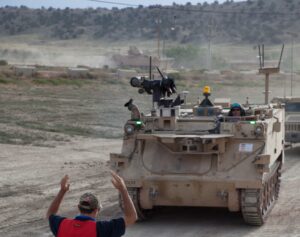A House Armed Services Committee (HASC) cyber panel has proposed directing the Pentagon implement two new pilot programs to improve its ability for transitioning science and technology programs across “the valley of death” and into production.
The HASC Cyber, Innovative Technologies, and Information Systems Subcommittee’s fiscal year 2022 National Defense Authorization Act mark
also includes a directive for the department to submit a report on barriers hindering the ability to successfully transition such programs, and asks for officials to consider whether additional “flexible funding” can help address such issues.

“The committee is concerned that the Department of Defense struggles to transition and scale critical innovative technologies from development projects to acquisition programs in a time period that meets the needs of the warfighter and ensures technology providers are able to survive. Despite Congress providing significant new acquisition authorities and flexibilities, too often successful prototypes and pilot efforts are unable to transition to successful programs due to a lack of agile funding,” the panel wrote in its mark.
The panel’s mark, which will be considered by the subcommittee on Wednesday, directs the Pentagon to carry out a five-year pilot to look at setting up a new entity run by “qualified intermediaries” to assist in helping the department “become a better buyer and a more attractive customer to innovative commercial companies.”
“We talk a lot about the valley of death on this subcommittee and talked to a lot of different people about that and the frustrations people have, especially from the science and technology community and ecosystem kind of bridging that massive gap into acquisition and fielding of capability,” a subcommittee aide told reporters. “The five-year pilot program to help foster transition is actually trying to allow the department to [work with] partnership intermediaries to support all of these S&T efforts that are trying to transition. People have these great ideas…and no one really understands how to get into the budget cycle, how to work the acquisition system, how to meet the right people in the program offices and actually start to get bought.”
The bill also includes a directive for the department and each of the services to select a handful of Small Business Innovation Research programs and Small Business Technology Transfer (STTR) programs, to be designated as “Entrepreneurial Innovation Projects,” to understand how such programs can be more successfully integrated into the budgeting and acquisition process.
“What we’re saying to the department is that they have an amazing amount of small innovative businesses that are doing awesome work…pick at least five and select them as your Entrepreneurial Innovation Projects and show us how you’re going to transition them out of S&T and into fielding and acquisition,” a subcommittee aide said.
The mark notes that SBIR and STTR programs allow small businesses increased opportunities to apply their technologies for specific capability challenges, while pressing the department to more effectively codify the procurement aspect once projects have completed initial prototyping and development phases.
The Army is currently running several SBIR programs to address unique capability areas for its modernization initiatives, such as selecting 10 small businesses to work on innovative ideas for applying sensor and remote tracking capabilities for sustainment of its future fleet of Robotic Combat Vehicles (Defense Daily, July 9).